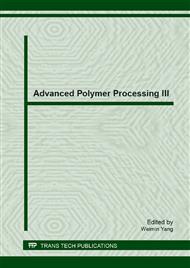p.411
p.417
p.422
p.428
p.435
p.441
p.448
p.454
p.460
Defects Analysis of Liquefied Gas Tankers
Abstract:
To a great extent,traffic accidents of liquefied gas tankers are caused by the defects inside the tankers themselves. Analyzing what causes the defects, and putting forward the corresponding prevention measures, to reduce accident risk, is of great significance. In this paper, the research object is a defective liquefied gas tanker in a propylene factory in Shandong. The defects in actual transportation process containing weld joints defects and anti-wave plates are analyzed, and the corresponding solutions are put forward on the basis of the literature analysis. The results show that the main causes of the defects are that the manufacture and processing did not correspond with design data. The defects repair of the liquefied gas tanker should be performed by qualified service units after specific repair plan and relevant formalities are put forward. The repaired liquefied gas tanker should be inspected qualified by the inspection organizations.
Info:
Periodical:
Pages:
435-440
Citation:
Online since:
July 2013
Authors:
Keywords:
Price:
Сopyright:
© 2013 Trans Tech Publications Ltd. All Rights Reserved
Share:
Citation:


